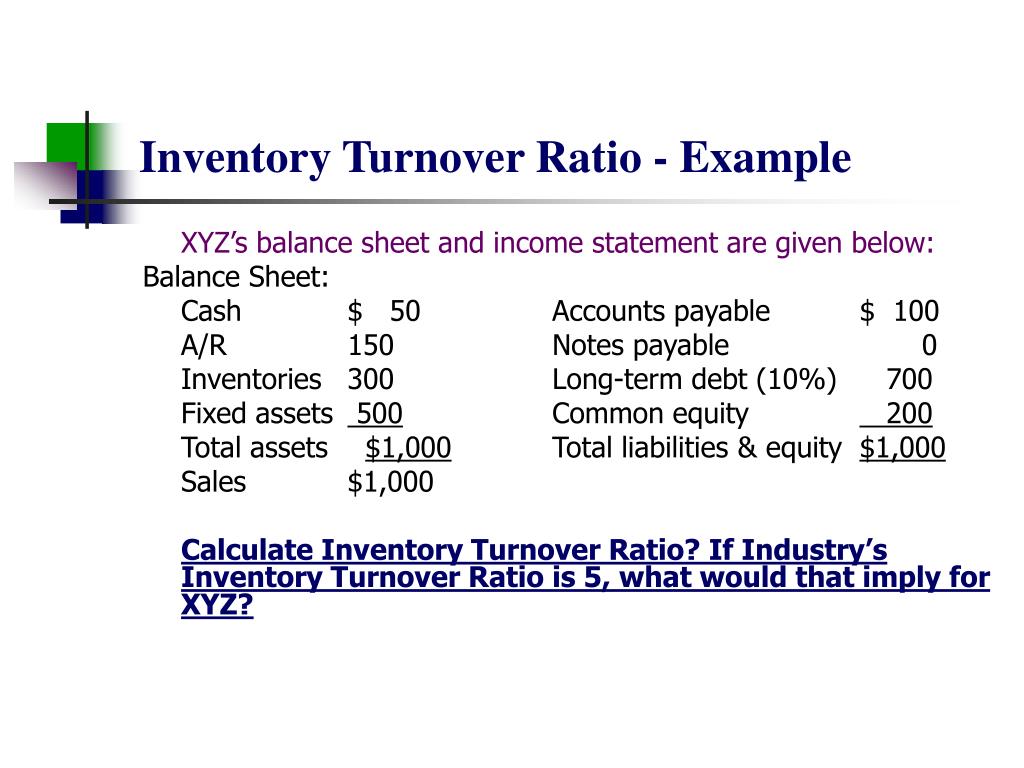

Is the company pricing its products at a competitive rate where there is sufficient customer demand? Some examples of practical diligence questions to ask (or answer) when assessing a company’s inventory management are the following: Rather than being a positive sign, high turnover could mean that the company is missing potential sales due to insufficient inventory. back orders, delayed deliveries, and speed) must be evaluated to understand the reality of the circumstances, as well as to see if there is an adverse impact on revenue. In such cases, the amount of pent-up demand (i.e. However, if a company’s inventory has an abnormally high turnover, it could also be a sign that management is ordering inadequate inventory as opposed to managing inventory well. That said, low turnover ratios suggest lackluster demand from customers and the build-up of excess inventory.įor example, retailers are typically known for exhibiting high turnover ratios – in particular, “fast-fashion” retailers like Zara are highly regarded for their ability to research trends and clear out their inventory quickly.
ACCOUNTING INVENTORY TURNOVER RATIO HOW TO
How to Interpret Inventory Turnover Ratio by Industry?Ĭomparing a company’s ratio to its industry peer group can provide insights into how effective management is at inventory management.įor companies with low turnover ratios, the duration between when the inventory is purchased, produced/manufactured into a finished good, and then sold is more prolonged (i.e. The company’s inventory, if left unsold, might eventually need to be written down to reflect the true (lower) value on the balance sheet. Low Inventory Turnover Ratio → There might be poor demand in the market and excess inventory accumulating (i.e.High Inventory Turnover Ratio → The company likely experiences strong demand in the market for its products, as confirmed by the high turnover and the frequent need for inventory replenishment.Since the inventory turnover ratio represents the number of times that a company clears out its entire inventory balance across a defined period, higher turnover ratios are preferred. Balance Sheet → A “snapshot” at a specific point in time of a company’s assets, liabilities, and equity.Income Statement → The financial performance, such as revenue, costs, and profitability, of a company across two periods.In effect, a mismatch is created between the numerator and denominator in terms of the time period covered. While COGS is pulled from the income statement, the inventory balance comes from the balance sheet. Inventory Turnover Ratio = Cost of Goods Sold (COGS) ÷ Average Inventory The formula used to calculate a company’s inventory turnover ratio is as follows. Calculate Inventory Turnover Ratio → The inventory turnover ratio is determined by dividing the company’s cost of goods sold (COGS) in the current period by the average inventory.Compute Average Inventory → The average inventory is the beginning and ending inventory balance divided by two.Identify the Beginning and Ending Inventory Balances → The beginning of period and end of period inventory balances are recorded on the company’s balance sheet.

The steps for calculating the inventory turnover ratio are the following: Thus, the metric determines how long it takes for a company to sell its entire inventory, creating the need to place more orders. The inventory turnover ratio is calculated by dividing the cost of goods sold (COGS) by the average inventory balance for the matching period. Simply put, the inventory turnover ratio measures the efficiency at which a company can convert its inventory purchases into revenue. The inventory turnover ratio is a financial metric that portrays the efficiency at which the inventory of a company is converted into finished goods and sold to customers. How to Calculate Inventory Turnover Ratio?

The Inventory Turnover Ratio measures the number of times that a company replaced its inventory balance across a specific time period.


 0 kommentar(er)
0 kommentar(er)
